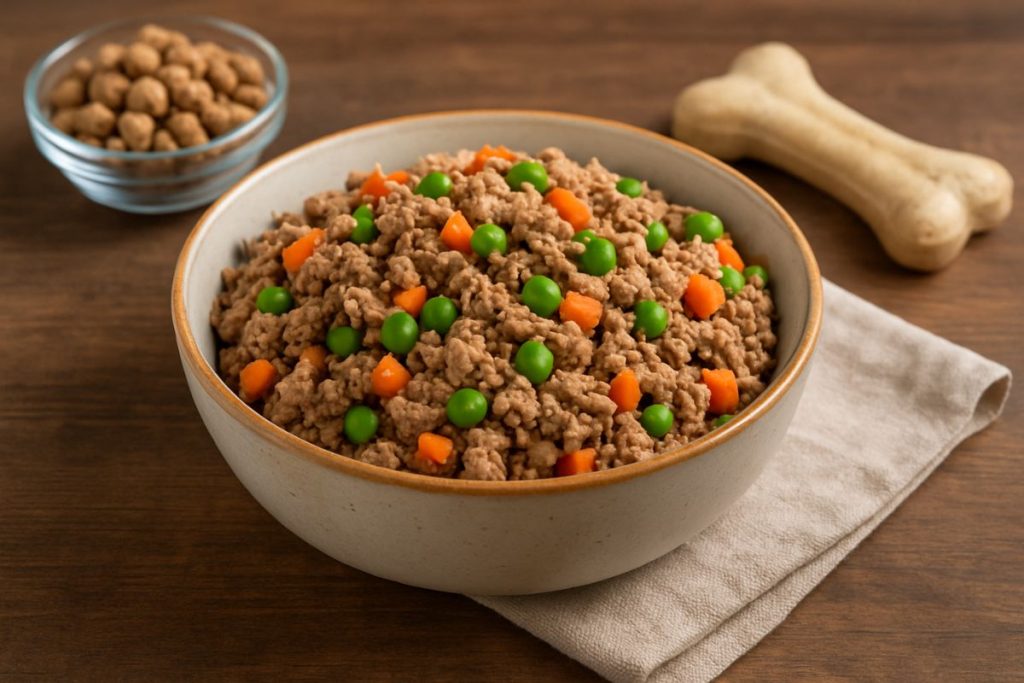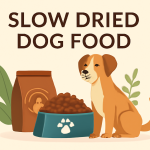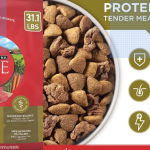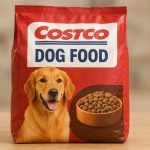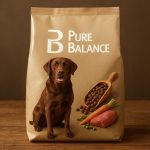Meta Title: Homemade Dog Food Recipes: Healthy Meal Ideas for Dogs (60 char)
Meta Description: Homemade dog food: nutritious recipes and tips. Discover fresh, balanced meal ideas for dogs, including allergy-friendly options.
Homemade Dog Food Recipes: Healthy Meal Ideas for Dogs
Feeding your dog homemade dog food can be rewarding, but it requires care. Many pet owners love the idea of cooking for their dogs, yet veterinarians warn that “dogs’ nutritional needs are different from our own,” so a home-cooked diet must be carefully plannedpetmd.com. Always consult your vet or a veterinary nutritionist before switching, since many recipes found online have never been reviewed by expertsakc.org. Proper planning ensures your homemade meals provide all the nutrients your dog needs.
Image: A bowl of homemade dog food (lean meat, rice, and vegetables).
Benefits of Homemade Dog Food
- Whole, fresh ingredients: You control exactly what goes into each meal. By selecting high-quality proteins (like chicken, turkey, or fish) and fresh vegetables, you know your dog is getting “whole-food ingredients that you would eat yourself”petmd.com. This means you avoid fillers and preservatives common in some kibble.
- Minimally processed: Unlike kibble or canned food, you can steam, bake or lightly cook ingredients, preserving more nutrients. Homemade meals can include a mix of raw (e.g. frozen) and cooked foods to suit your dog’s preferencespetmd.com.
- Diet variety: You’re not stuck feeding one formula every day. Mixing up proteins (beef, fish, lamb, eggs) and veggies (carrots, green beans, spinach, pumpkin) keeps meals interesting. Variety can support gut health and prevent boredompetmd.com.
- Custom-tailored nutrition: Homemade diets let you meet your dog’s specific needs. For example, you can choose leaner meats for weight control or novel proteins for food sensitivities. A home diet can be individualized so “the diet can be individualized to provide the appropriate calories and nutrients for your dog’s age, body weight, and health issues”petmd.com. Custom recipes also allow avoiding allergens or following special vet recommendations.
By cooking at home, you can bond with your pet at mealtime and ensure freshness. However, these perks come with responsibility: you must balance every meal carefully to be “nutritionally balanced”petmd.competmd.com, or health issues can arise (even weight gain or nutrient deficienciespetmd.com).
Nutritional Requirements for Homemade Meals
Building a healthy homemade diet means including all nutrient groups. According to experts, a balanced dog diet should include:
- Protein: Dogs need high-quality protein containing essential amino acidsakc.org. Good sources are lean meats (chicken, turkey, beef, lamb) and fish (salmon, whitefish). For example, “chicken and turkey… and beef and lamb” are recommended proteinsakc.org.
- Healthy Fats: Fats provide calories and essential fatty acids. Include meat fats or oils like salmon oil, flaxseed, or canola oil. These support coat and skin healthakc.org.
- Carbohydrates: Dogs also use carbs for energy. Cooked grains (brown rice, oats, quinoa) or starchy veggies (sweet potato) are common sourcesakc.org. These should make up a moderate portion (often about 20–40% of the meal).
- Fiber & Vegetables: Vegetables and fruits add fiber, vitamins and minerals. Good veggie choices include carrots, green beans, pumpkin, peas, apples and leafy greensakc.org. Fiber helps digestion and weight control. For example, “Good sources of fiber for dogs include carrots, pumpkin… apples, dark leafy greens, brown rice”akc.org.
- Vitamins & Minerals: A range of produce supplies vitamins (A, B, D, E, etc.) and minerals. For instance, carrots and spinach supply Vitamin A; fish and eggs supply Vitamin D. Crucial minerals include calcium (for bones) and phosphorus. A doctor warns that puppies on homemade diets must get enough calcium/phosphorus or “significant bone abnormalities may result”akc.org. Sources of calcium include tofu, broccoli, and ground eggshells, while meat and eggs provide phosphorusakc.org. Iron (red meat, liver) and iodine (seafood, dairy) are also importantakc.org.
- Water: Always provide fresh water alongside any diet. (No cooked meal can substitute for fresh drinking waterakc.org.)
Each meal should aim for balance: too little or too much of any nutrient “can lead to diseases, malnutrition, obesity, and even death”petmd.com. This is why many experts recommend using a veterinary-approved recipe.
Key Ingredients to Use (and Avoid)
When preparing homemade dog meals, use only safe, dog-friendly foods:
- Safe Proteins: Chicken (no bones, no skin), turkey, lean beef, lamb, fish (salmon, whitefish), and eggs are excellent protein sourcesakc.org. Organ meats (liver, heart) are nutrient-rich but should be fed in moderation. Remove fat trimmings and small bones before cooking.
- Safe Carbs & Veggies: Brown rice, oats, barley, potatoes, and quinoa provide healthy carbs. Vegetables like carrots, green beans, zucchini, peas, and spinach are all good fiber sourcesakc.org. Pumpkin or sweet potato adds flavor and digestive support. Fruits such as apples (no seeds) and blueberries can be treats.
- Calcium Sources: Include calcium to balance phosphorus from meat. Ground eggshells (baked then crushed), plain yogurt, or bone meal powder can help meet calcium needs.
Always avoid toxic foods: Many human foods are dangerous for dogs. The ASPCA and veterinary guides warn against:
- Onions, garlic, chives (Allium family): Can cause anemiaaspca.org. Do not use any onion/garlic in dog recipes.
- Grapes and raisins: Linked to acute kidney failure in dogsaspca.org.
- Chocolate and Caffeine: Contain theobromine and caffeine; can cause vomiting, tremors, seizures and deathaspca.org.
- Xylitol (sugar substitute): Even small amounts (in gum, candy, baked goods) can cause hypoglycemia and liver failureaspca.org.
- Macadamia nuts and high-fat foods: Can cause weakness, pancreatitis and neurological issuesaspca.org.
- Alcohol and raw bread dough: Can cause serious GI upset and alcohol toxicityaspca.orgaspca.org.
- Avocado, raw yeast dough, etc.: Refer to [ASPCA’s toxic food list] for a full listaspca.orgaspca.org.
In short, chocolate, grapes, raisins, onions, garlic, nuts, and xylitol should never appear in your dog’s mealspetmd.comaspca.org. When in doubt, check a reliable source (see the [ASPCA guidelines] on harmful foodsaspca.org).
How to Prepare Homemade Dog Food
- Plan a Balanced Recipe: Work with a veterinarian or pet nutritionist to formulate the recipe. You can also use trusted resources (like pet nutrition books or online veterinary services) for templatespetmd.com. Ensure the recipe meets AAFCO standards for complete nutrition.
- Buy Quality Ingredients: Shop for fresh meats and produce, just as you would for your own meals. Check expiration dates and avoid buying from unknown online sources. Consistency in ingredient brands and sources can help maintain diet balancepetmd.com.
- Cook Safely: Prepare meats thoroughly to kill pathogens (unless you feed a raw diet, in which case you accept some bacterial risk). Remove all bones (cooked bones can splinter). Wash fruits and veggies.
- Measure Precisely: Follow the recipe exactly. Even small substitutions (like swapping chicken for beef or skipping an ingredient) can unbalance the dietpetmd.com. Use kitchen scales and measuring cups for accuracy.
- Add Supplements if Needed: Most homemade diets need added vitamins/minerals. Your vet may recommend a canine multivitamin or a specific calcium/vitamin supplement to fill gapspetmd.com. Never guess on supplements – follow veterinary advicepetmd.com.
- Portion and Store: Divide the food into daily portions (weigh by meal) and refrigerate or freeze extras. A common method is cooking a large batch (e.g. on Sunday) and portioning it for the weekpetmd.com. This saves time on busy days.
- Transition Gradually: Introduce homemade food slowly. Mix increasing amounts of new food with your dog’s current food over 5–7 daysakc.org. A sudden switch can cause GI upsetpetmd.com. Observe your dog’s appetite and stools; if there’s any concern, slow down the transition and consult your vet.
Following these steps carefully can help ensure your dog’s homemade meals are safe and nutritious.
Image: Homemade dog biscuits (whole grains and pumpkin) prepared as healthy treats.
Homemade Dog Treats and Snacks
In addition to meals, you can whip up healthy homemade dog treats. These are great for training or as occasional snacks:
- Peanut Butter Oatmeal Biscuits: Mix whole-grain oat flour, plain peanut butter (xylitol-free), eggs, and bake into cookies. These are high in protein and fiber.
- Pumpkin or Sweet Potato Chews: Puree cooked pumpkin or sweet potato and mix with a bit of flour and egg; cut into shapes and bake. Pumpkin adds fiber and vitamins.
- Carrot or Apple Chips: Thinly slice carrots or apples (no seeds) and bake until crunchy. These provide vitamins and satisfy chewing urges.
Always avoid adding sugar, salt or harmful ingredients. Store treats in an airtight container. (See the image above for a batch of fiber-rich homemade biscuits.) Making treats at home lets you control quality and cater to your dog’s tastes.
Raw vs. Cooked Diets: Pros and Cons
Some owners consider feeding raw dog food (sometimes called BARF – “biologically appropriate raw food”). Raw diets typically include uncooked meat, organs, bones and sometimes raw veggies. Proponents claim raw food is more “natural,” but vets caution about safety.
The FDA warns that raw pet foods are often contaminated: a study found raw dog food more likely than kibble to contain Salmonella or Listeriafda.gov. This risks illness for pets and humans who handle the food. (For example, 15 of 196 raw food samples tested positive for Salmonellafda.gov.) Likewise, raw meat can carry E. coli. For this reason, many experts recommend cooking homemade meals to eliminate bacteriaakc.orgfda.gov.
However, if you choose to feed raw, take strict precautions: freeze meat first, handle on a separate prep area, wash all surfaces, and supervise bone-chewing (raw bones can splinter). Even with care, raw diets remain controversial. As one nutritionist notes, a cooked “paleo” recipe was created “recognizing the health risks posed by raw food due to strains of E. coli and Salmonella”akc.org.
In summary, raw diets carry infection risksfda.gov, whereas cooking is safer. You can still feed partially raw (e.g. raw vegetables or raw cold-pressed meat), but ensure that all raw components are clean and safe.
Managing Allergies and Food Sensitivities
Dogs can develop food allergies or intolerances (common culprits include beef, chicken, dairy, wheat and soy). Homemade diets allow you to eliminate these triggers. The best dog food for allergies is often a limited-ingredient or novel-protein diet. For instance, recipes using turkey, venison, duck or bison plus a single carb (rice, potato) can work well. By removing common allergens, you can often improve itchy skin and digestion.
Veterinarians commonly recommend novel proteins. One example recipe with bison and rice excludes beef, chicken, eggs, corn and soyakc.org – all frequent allergens. Another uses turkey and pumpkin to soothe sensitive stomachsakc.org. If your dog has allergies, work with your vet to eliminate suspected ingredients one at a time and see if symptoms improve. An elimination diet (simple home-cooked meals with one protein source) can help identify the problem food.
Remember: even “healthy” human foods (like wheat or soy) can be bad for some dogs. Always introduce new ingredients slowly and watch for any adverse reactions. Homemade food for allergies means one thing: keep it simple and watchful.
Commercial Fresh Dog Foods (e.g. The Farmer’s Dog, Freshpet)
If you like the idea of fresh meals but lack time to cook, there are pet food companies that ship fresh food. The Farmer’s Dog and Freshpet are two popular brands. They deliver pre-made, refrigerated dog food made from human-grade meats and produce. These foods are formulated by nutritionists to be complete, so you don’t have to add supplements.
However, convenience has a price. Fresh pet diets can cost significantly more than regular kibble. In fact, industry data show “frozen” or fresh pet foods often run $7–19 per pound, whereas average dry dog food is about $3 per poundpetfoodindustry.com. Even dehydrated treats cost more per pound. So while brands like The Farmer’s Dog and Freshpet offer high-quality meals (often marketed as “farmers dog food” or “freshpet dog food”), be aware of the cost.
Many owners use these brands as a benchmark: if your homemade recipe is well-balanced, you’ll get similar nutrition at a lower cost. On the other hand, for pet parents who can’t cook daily, these fresh food plans are an alternative. Always read labels: not all “fresh” pet foods are USDA-human-grade (some may still contain feed-grade ingredients).
Frequently Asked Questions
Q: Is homemade dog food as nutritious as commercial food?
A: It can be, but only if carefully balanced. Homemade meals allow use of fresh, whole ingredients (a plus), but you must ensure all nutrients are includedpetmd.competmd.com. Commercial dog foods are formulated to meet AAFCO standards, so they guarantee minimum nutrition. To match that at home, use veterinary-approved recipes, add any needed supplementspetmd.com, and regularly check your dog’s health with the vet.
Q: How do I balance a homemade dog food recipe?
A: A balanced recipe includes appropriate amounts of protein, fat, carbs, fiber, vitamins and minerals. The general guideline is ~40–50% protein, ~25% veggies/fruits, ~25–30% carbohydrates, plus essential fatsakc.orgakc.org. Use a trusted recipe designed by a canine nutritionist, and follow it exactlypetmd.com. You may need to add a commercial dog vitamin/mineral supplement to reach 100% balancepetmd.com. Regular vet check-ups (blood tests, weight monitoring) help confirm your homemade diet is working.
Q: Can I feed my dog a raw diet?
A: While some owners feed raw meat, vets caution it carries infection risks. Research shows raw pet food is more likely to contain pathogens like Salmonella and Listeriafda.gov, which can sicken pets or humans. If you choose raw, always handle it safely (freeze meat first, avoid cross-contamination) and consider consulting a nutritionist. For most, a cooked homemade diet offers similar benefits without the bacterial riskakc.orgfda.gov.
Q: What’s the best homemade dog food for a dog with allergies?
A: The best diet for allergies is typically very simple. Use a single, novel protein (one your dog hasn’t eaten often, like venison or duck) and one grain or starch (rice, sweet potato)akc.org. For example, a turkey-and-rice meal or a salmon-and-sweet-potato meal with no other ingredients can help isolate allergens. Eliminate dairy, wheat, soy, eggs, etc., which are common triggers. Work with your vet to identify the allergen. In practice, some owners call this an “elimination diet” at home. Over time you can gradually reintroduce foods to see which cause a reaction.
Q: Are commercial brands like Freshpet or The Farmer’s Dog better than homemade meals?
A: These brands do offer balanced, fresh meals; they have recipes formulated by board-certified nutritionists. For example, The Farmer’s Dog advertises human-grade ingredients and complete nutrition. That said, many pet owners find that properly made homemade meals can match their quality at a lower cost. The trade-off is time vs. money. Using Freshpet dog food or Farmers dog food is convenient and safe nutrition-wise, but it can cost several times more per meal than dry kibblepetfoodindustry.com. Homemade food requires effort to ensure safety and balance, but it gives you complete control over ingredients. Some pet parents mix approaches – e.g. cook at home for most meals, and use a trusted fresh-food brand occasionally.
Conclusion
Homemade dog food can be a healthy, nutritious option when done right. By cooking for your dog, you know exactly what’s in their bowl – whole proteins, vegetables, and healthy carbs – tailored to your pet’s needs. Remember to keep homemade dog food recipes balanced: include all nutrients (protein, fat, fiber, vitamins/minerals) and avoid toxic ingredientsakc.orgaspca.org. Work closely with your vet or a pet nutritionist to create recipes that suit your dog’s age, size, and health. When prepared properly, homemade meals can support a shiny coat, strong energy, and overall wellness.
🦴 Love these ideas? Share this article on social and let us know your dog’s favorite recipe in the comments!
Sources: Authoritative pet health and nutrition references such as AKC and PetMD were used to ensure balanced diet guidelinesakc.orgpetmd.competmd.com. An FDA study on raw pet food safety was cited for raw diet risksfda.gov, and consumer data were used for cost insightspetfoodindustry.com. The ASPCA provided guidance on toxic foods to avoidaspca.orgaspca.org.

